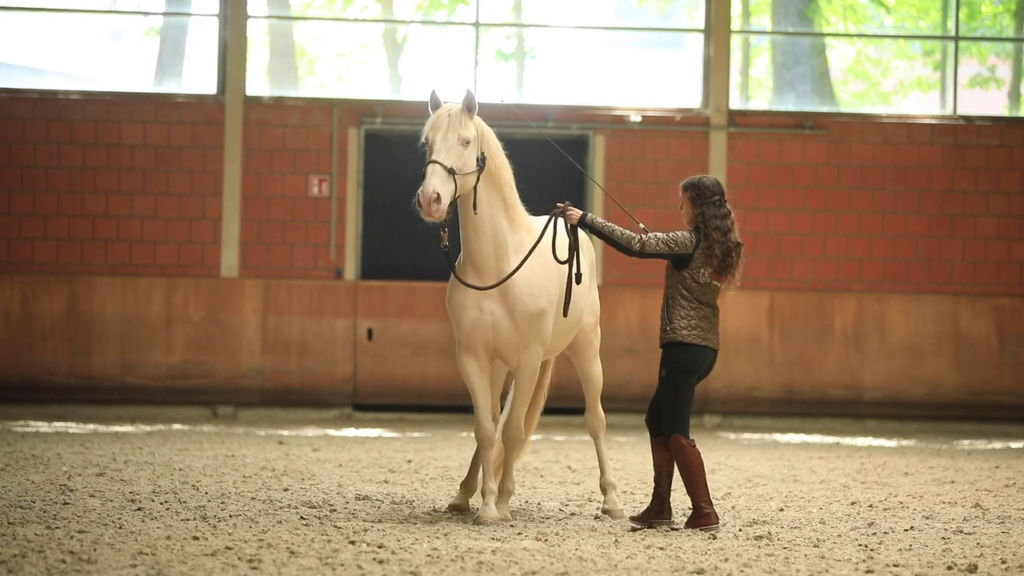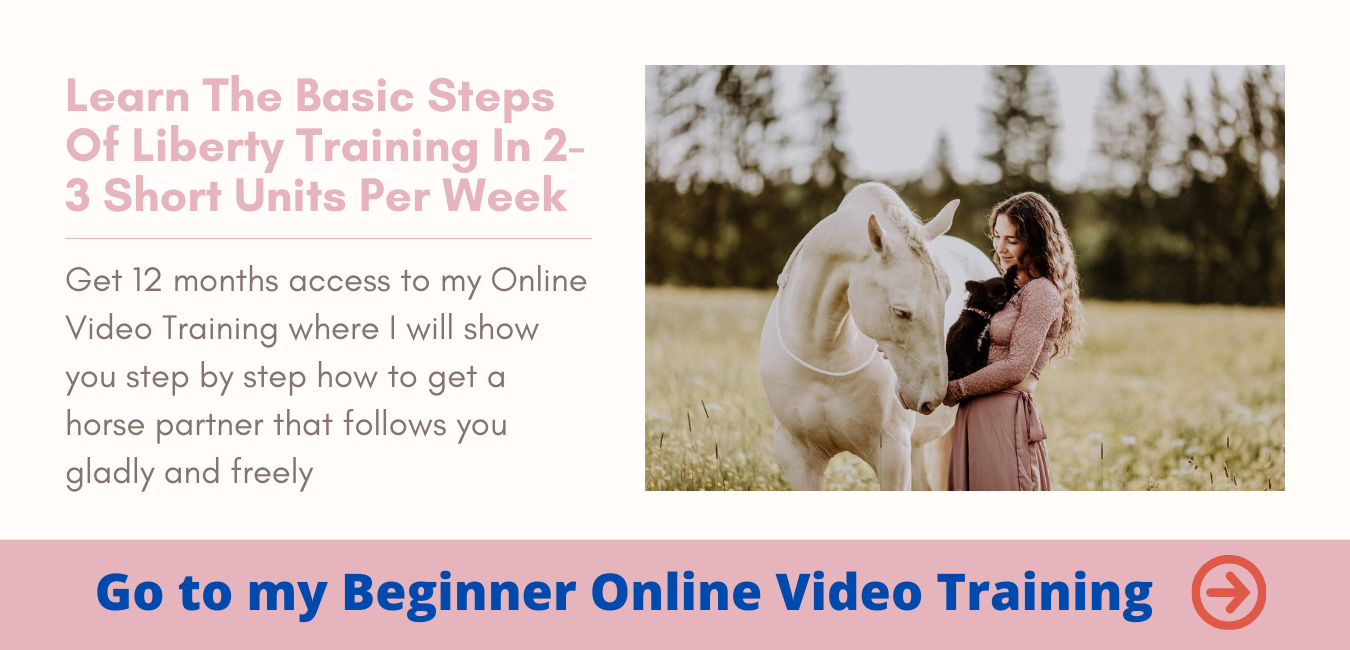Walking and riding forward is something you should always have in mind.
After all, a good basic speed is essential for gymnastic work – and forwards and backwards is totally “in”.
But to make sure that your horse steps under the centre of gravity and takes the load on the hindquarters, lateral movements are actually much more effective than forwards. They even straighten your horse!
That is why I would like to talk to you today about the advantages of lateral movements – and how you can work them out with your horse.
Sideways – but which one?
There are many different ways the horse can step sideways. One of the best known is probably the thigh movement, here the horse is bent against the direction of movement and ridden forwards and sideways.
The shoulder in is one of my favorite exercises in gymnastic training. The horse kicks with the forehand from the hoofbeat towards the middle of the hall or square. Your horse is placed and bent inwards to match this and continues “straight ahead” along the hoofbeat.
Because the horse continues to walk “straight ahead” with the inner hind foot, but the horse is bent towards the middle of the arena, the inner hind leg really steps under the centre of gravity. This not only promotes load bearing on the hindquarters but also stretches the entire structure in this area.
Because the horse also has to “put the outer front leg away” from the body to get away from the spot, he has to lift this shoulder by force. Since many horses like to avoid this, the shoulder lift is also a good exercise for more shoulder freedom and a freer, looser shoulder girdle.
In the free work I do not take it so exactly 😉
Shoulder in: Here’s how it goes
In this video I will show you how you can work on the shoulder with your horse.
[su_youtube url=”https://youtu.be/Z-tJHH6UGIY”]
I really recommend to use a cavesson, because you can influence the position and bending of your horse much better and more precise. The knot halter also works very fine and punctual because of the knots, but because you have hooked the rope at the bottom (and not on the nose as with a cavesson), pulling on the rope actually works in the opposite direction, namely outwards.
Your horse will therefore find it much easier to understand the exercise if you use a cavesson.
Of course you should make sure that the bridle lies softly on the nose, fits the shape of your horse’s nose and fits well. It must not press or rub anywhere – and depending on the type of bridle you use, you should remember that a cavesson can quickly appear very “sharp” and your corrections should therefore only be very fine and moderate!
If you would like to start with the shoulder in, it is best to start at the fence of the riding arena or at the board. Stand inwards and have a crop as an extended arm with which you can hold your hindquarters on the band while standing on the head.
Now start to lead your horse’s head and shoulders inwards away from the hoofbeat at a normal to moderate walking pace.
The challenge is that the horse is bent nicely and not just the neck inwards and running over the shoulder. The hindquarters also like to come inwards from time to time, as horses like to save energy by making little effort. ? Your horse should be nicely bent against the direction of movement.
At the beginning a few nice, fluent steps are really enough and you can compliment your horse. Leg coordination is a real challenge for young horses or horses for whom the side walks are completely new! In any case, make sure you maintain a fluid pace and that your horse doesn’t get slower and slower all the time.
And then?
Once you have worked your way safely in, you can start directly with the “croup in”, also called travers.
This exercise is so to speak a “reverse shoulder in” where the forehand stays on the hoof stroke and the croup comes in. However, in this exercise the horse is now bent in the direction of movement and not, as in the shoulder in, in the opposite direction – which is much more difficult for the horse.
If you are wondering what the differences are between Travers, Renvers and the shoulder in, I can quickly help you out here ?. The difference is mainly the bending in combination with the direction of movement (shoulder in vs. Travers & Renvers)!
Where the horse is bent against the direction of movement in the shoulder, it is bent in the direction of movement in the travers and renvers.
So if the horse is bent to the left in the left hand while the shoulder leaves the hoof inwards, the horse is bent to the right in the renvers.
Since I find it difficult to describe this theory myself, I can only recommend that you think this through carefully before training your horse and maybe even try it out yourself in a “dry run” to see what your horse should look like. Because by now we know how important inner image is in training!
So if you have no idea where the journey is going to take you, it will be even more difficult for your horse to understand what you want from him.
That’s it for the side walks?
Of course not ? There are also the traversals and side gallops. How exactly they are performed varies according to the riding style – but I find this area incredibly exciting!
Side gaits are an essential part of my gymnastic training. Because as paradoxical as it sounds: side gaits straighten the horse! In free work, however, I do not take the position and bending of the horse too seriously, since the horse should balance and carry itself well.
Side walks, however, encourage the horse to step under the centre of gravity and activate the hindquarters like no other exercise. Also the abdominal muscles of your horse are trained super by side gaits! It also makes the horse’s hips even more flexible and loosens his back – the “magic exercise” par excellence!
With this in mind, I wish you lots of fun riding sideways ?
All my love,
Your Kenzie




